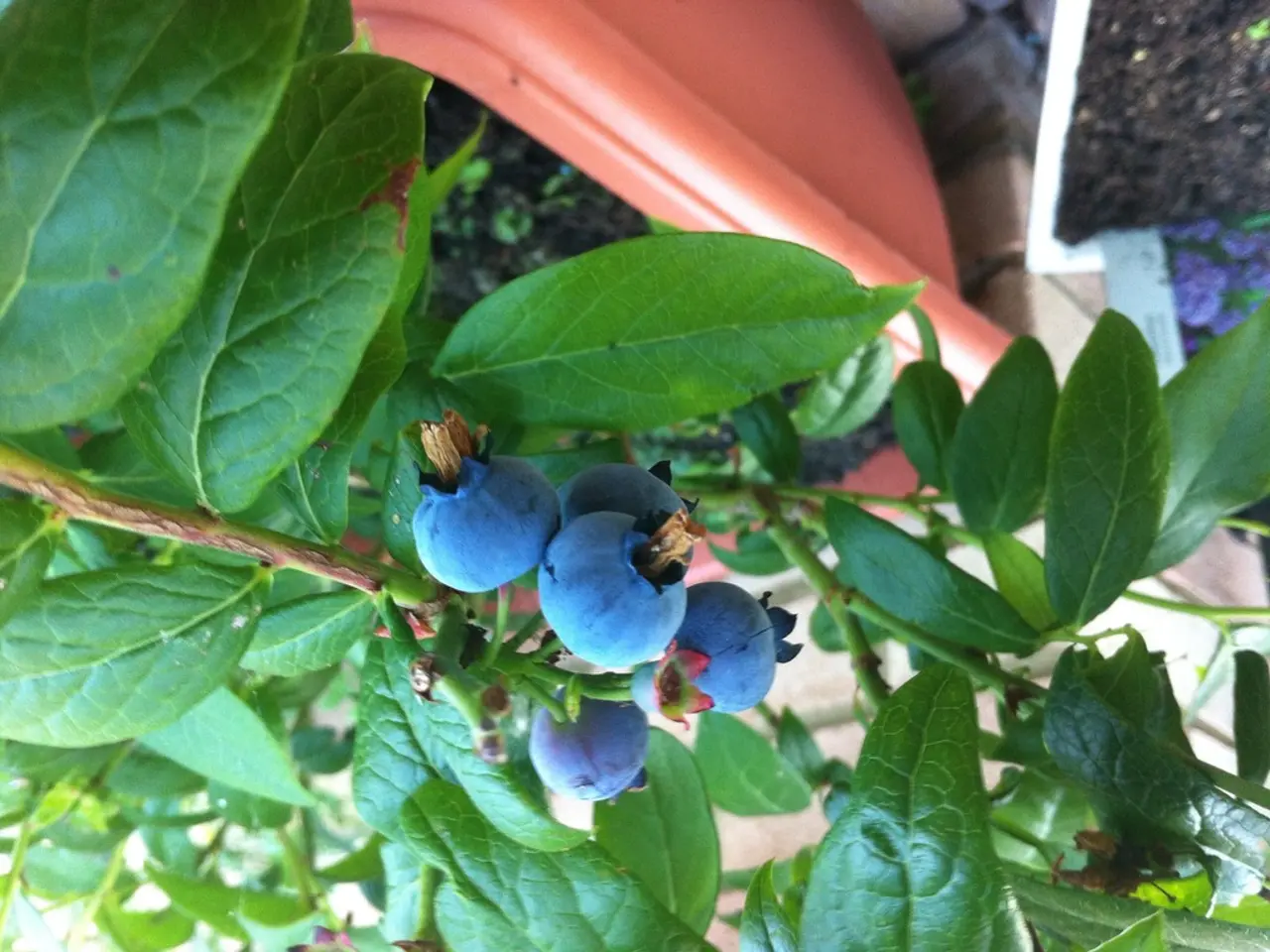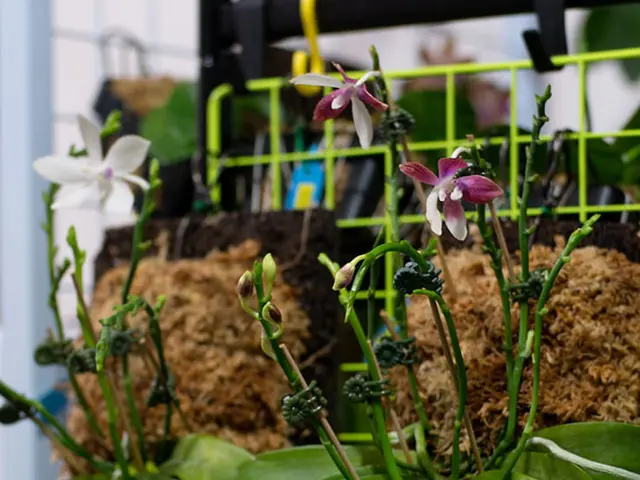Cultivating Blueberries in a Personal Backyard Garden
Blueberries are a popular fruit choice for home gardens, offering delicious fruits and minimal spray requirements. To grow blueberries successfully, it's essential to provide the right conditions for these acid-loving plants.
Soil Conditions
The recommended soil conditions for growing blueberries at home are very acidic soil with a pH between 4.5 and 5.5. Blueberries require soils rich in organic matter. To prepare the soil, mix several inches of well-aged compost into the top 8–12 inches of soil before planting. This will lower pH, provide nutrients, and improve moisture retention. If your native soil pH is above 5.7, acidify it with elemental sulfur or similar amendments; if below 4.5, you may lightly lime to adjust to around 5.5.
For container growing, use a soil mix of equal parts peat moss, pine bark, and perlite or sand to ensure acidity, aeration, and drainage. Keep containers well-drained and monitor soil pH regularly since standard potting mixes tend to be alkaline and require adjustment with sulfur or acidifying fertilizers.
Care Requirements
Select a sunny or partially shaded location with well-drained soil for your blueberry plants. Maintaining consistent moisture without waterlogging is crucial. Applying mulch like pine bark will help retain moisture and suppress weeds.
Use fertilizers formulated for acid-loving plants to maintain nutrient availability at low pH. Monitor soil pH regularly, especially in containers, to ensure it stays within the acidic range essential for blueberry health and fruit production.
In the year of blueberry planting, apply 1/2 to 2/3 pound of ammonium sulfate or 10 ounces to one pound of 10 10 10 per 100 feet of row, four weeks after planting. In the second year and succeeding years, apply 1 to 1.5 pounds of ammonium sulfate or 2 to 3 pounds of 10 10 10 per 100 feet of row each year for fertility and acidity maintenance.
If the plant leaves become chlorotic, apply 2 to 3 ounces of ferrous sulfate or iron chelate around the base of the plants each year.
Watering
Blueberry bushes have very shallow root systems and are very sensitive to water fluctuations. They require at least 1 to 2 inches of water per week. Supplemental watering is essential to obtain good yields of high-quality fruits during the growing seasons. Blueberries grow best in moist, well-drained soils.
Growth and Yield
Blueberry plants begin to produce fruit in the second or third season, but do not become fully productive for about six to eight years. Blueberries require full sun (six to eight hours of sunlight per day) for optimum yield and quality.
Drought stress at late August and September will reduce yields the following year. Maintaining a moist soil into the late summer after harvest is crucial to ensure flower buds for next year form.
Choosing the Right Blueberry Variety
Highbush blueberries are recommended for Ohio, while rabbiteye and southern highbush blueberries are recommended for the southern United States. Highbush blueberries do not require two different cultivars for cross pollination purposes. There are many good blueberry cultivars available, such as Bluetta, Duke, Bluecrop, and Bluegold.
Winter Care
Blueberries can suffer winter injury to flower buds when temperatures drop below -20°F, but half-high blueberries can tolerate -35°F to -45°F.
By following these guidelines, you can enjoy home-grown blueberries for years to come. Happy gardening!
Read also:
- Thirty-three Amazon Canada Items That Impressed Me Significantly with their Exceptional Brilliance
- Customizable Sleep System Top Pick: Eco Plus Adjustable Bed
- Improved Sleep Experience: Discover Unmatched Comfort with Leesa Plus Mattresses
- Forestry work takes center stage for firefighters as tree planting challenge kicks off in Fürth





